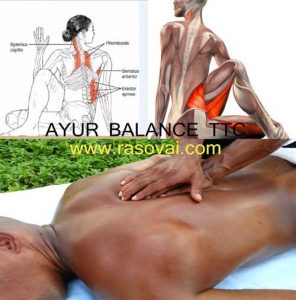
Unbinding the Ropes of Twists
I have often noticed that while it’s easier for most of us to do any kind of extensions or stretches but when it comes to twists there is a significant resistance.
The body is generally used to and used for-‘simple linear movements’. Twists are not a part of our general activity. There for the difficulty in the twits.
There could also be other accompanied factors related to hindrance for the rotation of the trunk like injury or spinal deformities or some other medical conditions.
 But for normal population, the hindrance in the rotational mobility is generally considered as the blocking from the rhomboids whereas it’s mostly the opposite. Rhomboids nearly in every one of us are actually over extended and would do well to strengthen them.
But for normal population, the hindrance in the rotational mobility is generally considered as the blocking from the rhomboids whereas it’s mostly the opposite. Rhomboids nearly in every one of us are actually over extended and would do well to strengthen them.
The causes would be the tight/resisting- *pecs, oblique’s, intercostals and as well as the intrinsic cervical + thoracic spinal muscles, that limits the movement and prevent the rotation of the thorax. Of course also with a little help from the slumping in the lumbar region that creates the imbalance in the stability of the lumbar vertebrae and discs. But on the other hand extending them too much brings a locking mechanism in to the thoracic spine, inhibiting rotation on the axis.
In Ayur Balance Massage Training courses, we focus on releasing/lengthening the said above *muscles and freeing the opposite movement like that of oblique’s. This profoundly helped the client to reach further into the twists and unblocking the resistance in the psycho characteristic as well.
Without the help of a massage the same can be worked upon by disengaging the use of arm initially while moving in to the asana with gradual shift through the spinal rotation and engaging the muscles to hold the structural shift so as they are strengthened while extending.
The whole of the torso can contribute to this twist—both right and left sides of the front and both right and left sides of the back, at different layers of muscle.
Many of us can also self assert the twist by something that we call as ‘Fake Reach”- in this case over mobilizing the scapulae. When this happens it looks like the appearance of rotation, but there is not actually that much actual movement in the spine.
The shoulder girdle has more range of motion than the thoracic structures have and so the overreaching with the scapula can give an impression of twist.
The better way to maximum safely reach the twist is using the action of spine. Move into the pose without using the arm and twist till a safe rotation is found in the spinal twist. The arms can come in last to further deepen the pose. Arrangement of the legs is another factor in limiting the twist but that is what the purpose of it. It can in certain poses provides the extension in the IS joint provided they are not over extended.
